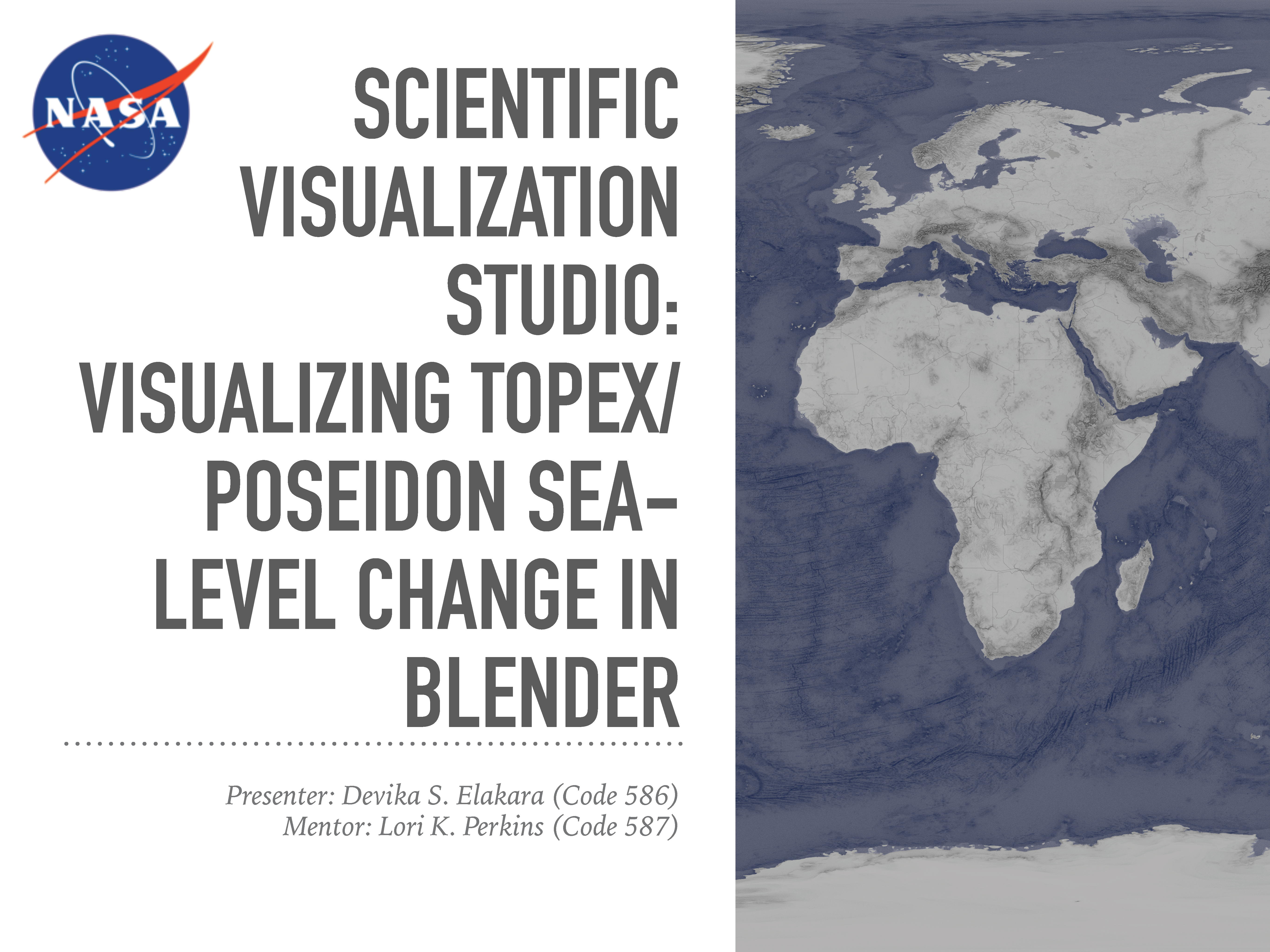SCIENTIFIC VISUALIZATION STUDIO: VISUALIZING TOPEX/ POSEIDON SEA-LEVEL CHANGE IN BLENDER
Devika Elakara
Project Description
The purpose of this study was to create an animation to explain the total global sea level change between 1992 and 2019 for NASA’s Sea Level Rise Campaign in November 2020. NASA is also experimenting with the open-source 3D graphics software, Blender. Blender is a free computer graphics software toolset that is often used for creating films, visual effects, 3D models, etc. Most of the visualizations that are produced at the Scientific Visualization Studio (SVS) are made with Maya and Renderman. Maya is a 3D graphics application developed by Autodesk, while Renderman is a Pixar developed photorealistic rendering software. Due to the COVID-19 Pandemic, external access to SVS’s Maya and Renderman was unfortunately restricted to interns. This situation presented its challenges, but also research opportunities. Seeing as Blender is open-source software, the visualizers at SVS wanted to see if it could be used for creating NASA animations, and if there were any major pipeline differences with Maya and Blender. Throughout the study, it was discovered that while there are some technical and user interface differences between Blender and Maya, it was still a viable option for NASA visualization, and can be used for communicating earth science data stories. The animation made for this project was an update on a previous sea level rise animation. The new animation focuses on the total sea level change between 1992 and 2019 and is based on data collected from the TOPEX/Poseidon, Jason-1, Jason-2, and Jason-3 satellites. In the visual, the blue regions are where sea level has gone down, while the orange/red regions are where sea level has gone up. The color range for this visualization is -15 cm to +15 cm (-5.9 in to +5.9 in), though measured data extends above and below 15 cm (5.9 in). This range was chosen to highlight variations in sea level change. Global sea level has been rising for the past century, and the rate of increase has accelerated in recent decades. Coastal areas are at greatest risk for flooding, land loss, and disrupted economies and societies. This issue cannot be solved by one person, organization, or country; it will be a cooperative global initiative. The European Space Agency is continuing the Topex/Poseidon and Jason series of ocean altimetry measurements by launching the satellite, Sentinel-6 Michael Freilich, in November 2020. Michael Freilich was the Director of NASA’s Earth Science Division and a career oceanographer. Sentinel-6 Michael Freilich will continue taking high precision ocean altimetry measurements from 2020–2030. With these advancements in satellite technology and in international cooperation, NASA helps to further sea-level research and work towards solutions to ensure the health of the planet and the people.



